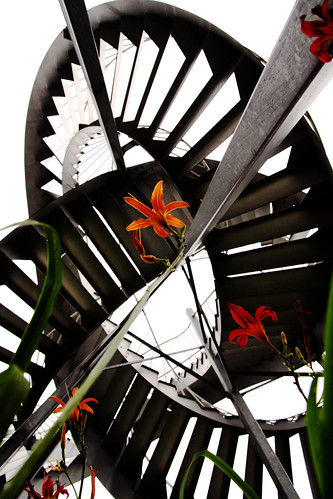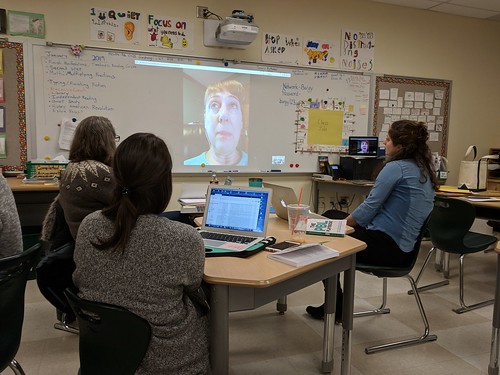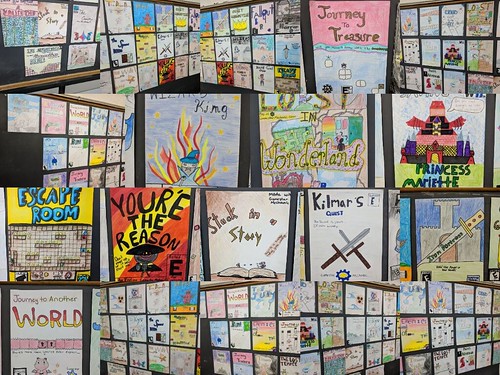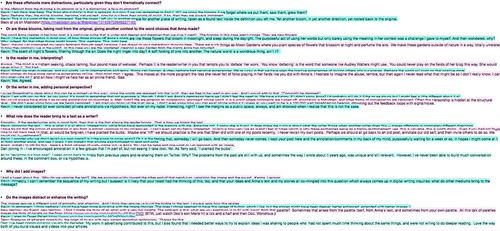
mobius_strip flickr photo by pixelcrazy shared under a Creative Commons (BY-NC-SA) license
In response to a small endeavor I called Four Seeds:
You and Terry 🤩 me with the volleying of ideas. Tutorial needed to understand process!
— Yin Wah Kreher (@yinbk) January 21, 2019
Terry wrote:
Too right. It is a process. I think it starts with three words: trust, reciprocation, and time. Join in with us. Share play. Really hard to describe, but we will try.
— Terry Elliott (@telliowkuwp) January 21, 2019
Wendy wrote:
.@yinbk asked for a road map of how you guys play….this is as close as I could get….More Swing https://t.co/r3qidltiYB #MoDigiWri #clmooc
— Wendy Taleo (@wentale) January 21, 2019
Actually, Wendy wrote a lot more, at her blog, and you should read her look at what she calls “reconstruction and remix.”
My take:
- It begins with an openness, a willingness to share something out with others. In this case, Terry wrote a poem at his blog inspired by his work looking at seeds for the spring for his farm. He could have written the poem and not shared it. But he didn’t. He shared.
- It moves along with an invitation. Terry invited folks to write responses, in the margins (with Hypothesis), in the comment box at his blog, in the Etherpad he had set up. He’s looking for collaborators. His invitation is clear and heartfelt.
- It shifts when collaborators join in. For many, perhaps, this is the hardest part. The joining in. Terry will tell you that any sort of response was a good response. I left poems for him. But that’s what I do. I hoped to honor his poem with shoots of words.
- It gains traction with acknowledgement. Terry sent me a quick one line email, thanking me for the poems. The act of acknowledgement seems powerful in this kind of work, to show you have another person out there, reading or listening or watching.
- It sometimes won’t sit quiet. This is sort of a pivot point. Something about Terry’s invitation and then his acknowledgement, along with the theme of seeds, had me wondering about the poem. I gathered up my three poems and shared them in another space, Mastodon, as a #smallpoems (which Terry also is part of). It was small scale curation.
- It takes further listening. Terry saw that in Mastodon, and remixed my poems. He was taking poetic responses to his own poem and remixing them into another bookend poem, with mine in the middle. I should note: there was no plan. Terry and I did not talk or organize any of this. It happened rather naturally.
- It takes honoring the other. I was fascinated by where my poems and his remixes gathered together and splintered apart, and it seemed like I needed to find a way to show that. Thus, the music to capture the poems, and the video.
- It takes openness. Back to the beginning. Sharing the piece out led to Wendy, listening, and adding notation to the Soundcloud of the soundtrack I had created with Garageband and Thumbjam. And Yin Wah, asking for how one might enter the conversation, and how it all came together (which is why I am writing this).
Along this path, there were multiple entry points. Some came with distinct invitations. Others were less visible. It is also something built on years of riffing with each other, as Terry and I go back. We are comfortable with our remixes. We trust each other.
Perhaps this trust is the most important element of all.
Peace (in the remix),
Kevin
PS —





